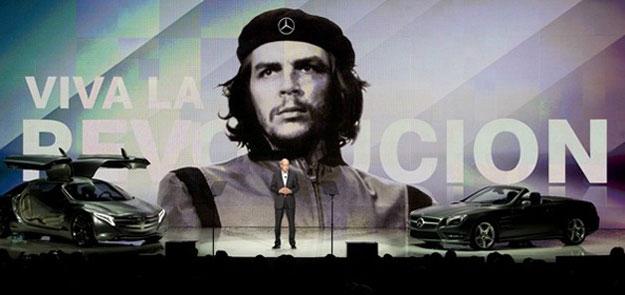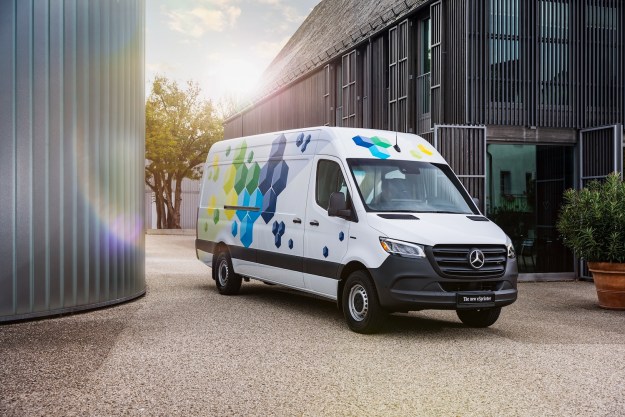
At this year’s Consumer Electronics Show, Mercedes-Benz suffered somewhat of a public relations nightmare when Dieter Zetsche, Daimler CEO, made reference to Argentine revolutionary Ernesto “Che” Guevara — unveiling a giant one-story image of Guevara complete with a Mercedes-Benz three-pointed star on his iconic beret and causing quite a stir among Cuban Americans in Miami.
According to the Miami Herald, the giant image of Guevara was displayed behind Zetsche during a presentation in which he stated, “Some colleagues still think that car-sharing borders on communism, but if this is a revolution, then ‘Viva la revolucion’.”
Of course given the divisive nature of Guevara’s character and legacy, as is often the case with revolutionaries, the use of Guevara’s image would have no doubt struck a chord among Cuban exiles in South Florida – many of whom were forced to flee their homeland when Fidel Castro (with the aid of Guevara) overtook control of the island nation.
It’s hard to imagine that the people over at Mercedes would have been so oblivious as to not see the folly in using such an image and making such a reference. Regardless of your personal sentiments on the life and political ideology of the influential Argentine, the fact remains that Guevara is a historical figure draped in controversy. Ironically, it seems odd Mercedes would choose to use the image of a revolutionary who voluntarily gave up a life of wealth, luxury, and comfort. One can only imagine what the reaction would have been had Mercedes-Benz chosen to use images of another controversial figure – perhaps from its own history books?
Editors' Recommendations
- Mercedes G580 electrifies an off-road icon
- Mercedes’ electric eSprinter isn’t just greener, it’s better
- Mercedes-AMG EQE SUV first drive review: a better electric SUV
- Mercedes-Benz Vision One-Eleven concept looks to the past for inspiration
- Mercedes-Maybach EQS SUV is old-school luxury — electrified


